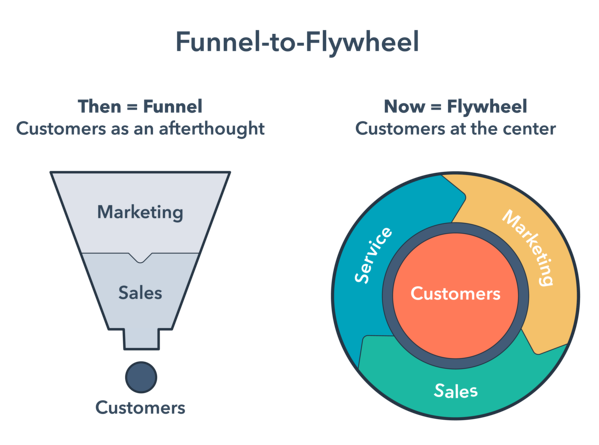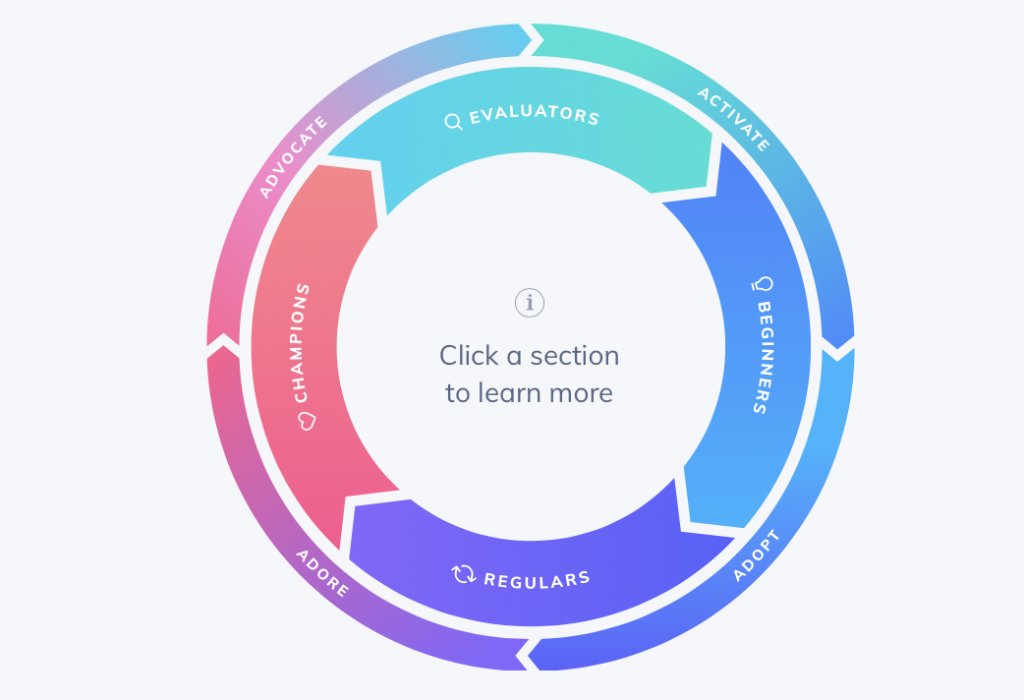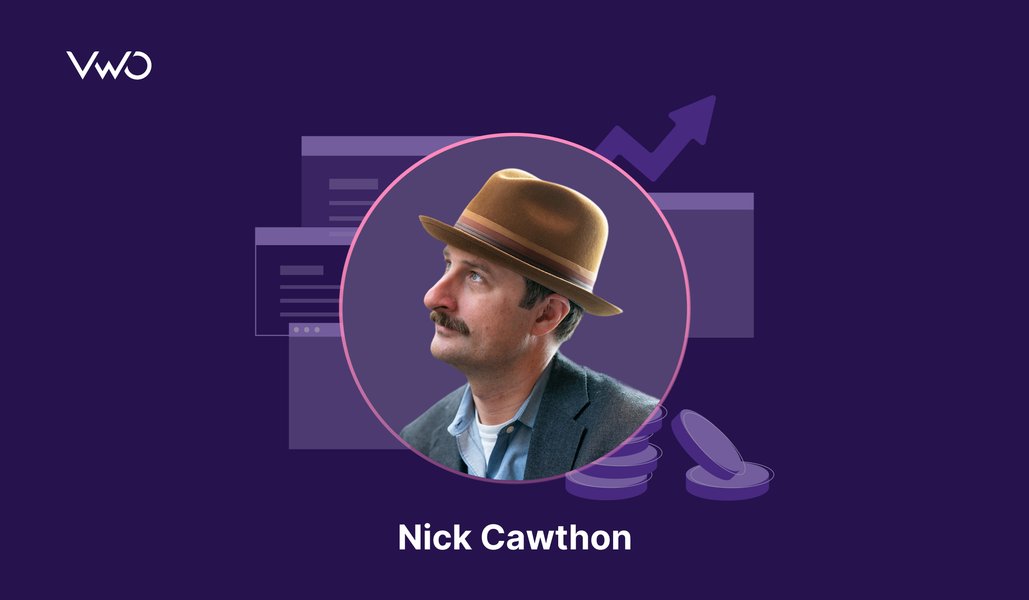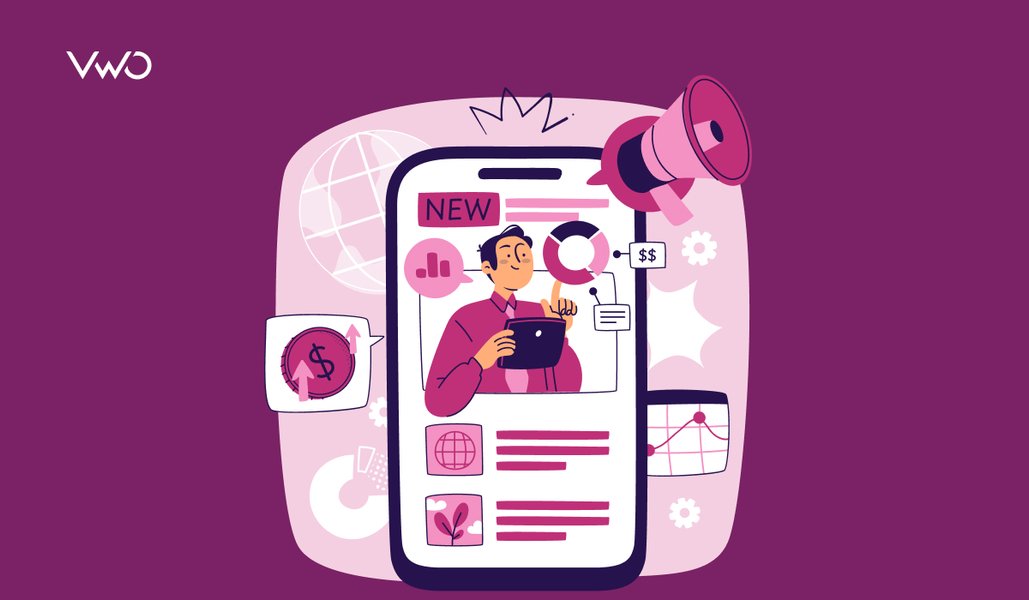If you’ve never heard of it, the Flywheel Model was brought up as the anti-thesis to the sales funnel.
Unlike the funnel that puts customers as an afterthought in a marketing and sales strategy, the Flywheel Model puts them at the heart keeping customers happy, allowing them to drive referrals and helping the company make sales.
Download Free: A/B Testing Guide

Through this blog, we attempt to answer why the Flywheel marketing model is worth ditching your old funnel and how to use it to create a stellar customer experience while growing your business and generating more revenue.
Advantages of using the flywheel model of marketing
If you’re a marketing professional, you’d probably know marketing and sales funnel inside out. Funnels are nothing but the mechanisms to convert leads into customers. And that’s it! What happens next is not often something that’s given much attention here. This is where the Flywheel Model comes into play!
One of the biggest and notably the most important advantages of using the Flywheel Model is that it helps focus on enhancing a customer’s journey even after they’ve matured into a customer. Nurture them from the very first moment they become a customer up until the stage when they turn into subject matter experts (gain expertise into your product and/or service) and brand advocates.

The above Flywheel Model image illustrates how a customer sits in the center or the heart of the wheel, and each of the focus areas represents how they’re propelled to become champions for the business.
The model also efficiently identifies causes of friction in marketing, sales, and service. You can see just which activities are propelling your flywheel faster, adding more and more momentum, or which are slowing you down and causing any hiccups or bumps.
And lastly, the model also details upon the impact of customer satisfaction on the success of your marketing strategy. In short, happy customers equals more customers.
Below mentioned are some tips and tricks to effectively and efficiently use the Flywheel Model to deliver a great customer experience.
5 ways to use flywheel marketing model to deliver better customer experiences
If you’re convinced that your business must make the switch, addressing the challenges associated with the said switch should top your list of concerns. Fortunately, you probably already have what you need to build your own flywheel for your business to excel. Just go back to your funnel and review which pieces can fit into which flywheel stage and get started.
The section below details upon some important steps to take to leverage the Flywheel Model to your advantage and optimize the customer experience.
Step 1: Re-educate yourself about various flywheel stages
You’ll, of course, need to set up the stages of your flywheel. We’ve seen one or two variations for this. For example, Hubspot’s Flywheel Model consists of a 3-stage wheel vis Attract > Engage > Delight.
But we particularly like Appcue’s rendition (above) of the Flywheel Model, especially for the way it highlights the customer journey and focus areas that help drive customers along. Using their model as a guide, here are four fundamental stages you can include in your Flywheel Model.
Stage 1: Activate
In this stage, you want to ease non-users (or Evaluators) to become new users (or Beginners).
This stage is all about convincing prospects about the value of your product or service. One of the best strategies for this is starting a high-converting website to show your expertise, give product use cases, and provide helpful tips and added value. Other ways include giving free trials or high-value free-forever plans.
Stage 2: Adopt
In the Adopt stage, you’re finding ways to keep new users coming back, making your solution the top-of-mind when it comes to a particular need or task.
This is also the stage where you must focus on converting Beginners into Regulars, who now start to master your product(s) or service(s) and are on a lookout for more value propositions you have in offer.
Find new and interesting ways to engage new customers and make them come back for more while triggering a sense of realization that your product is precisely what they need. Some ways to do so are as follows:
- Conduct detailed product tutorials and walkthroughs
- Highlight new or overlooked features
Stage 3: Adore
The Adore stage is what bridges users from being Regulars into Champions, or the people who genuinely enjoy your product(s) and/or service(s) and look forward to using them regularly.
This stage also plays well with the recurring finding that it’s much easier to retain current customers than acquiring new ones. Here are some examples of how to make customers fall in love with your product:
- Share helpful resource posts and success stories.
- Use surveys and feedback forms; ask about the features or benefits your customers would want to see next.
- Compel customers to upgrade to premium plans and reap the hidden benefits.
Download Free: A/B Testing Guide
Stage 4: Advocate
Last and the final stage, here, your Champions now help you bring in new customers aboard, helping drive awareness and ushering people in their direct network to the Evaluator stage.
This stage often relies on customer testimonials, reviews, and user-generated content. You can also consider incentivizing customers to advocate your product(s), such as running affiliate programs or reward systems, etc.
Step 2: Set proper metrics for each stage of the flywheel
Now that you understand the areas you should focus your energies, set some specific metrics and goals for each stage of the flywheel.
Using the same model example above, your metrics per stage should include the following:
- Activate: product-qualified leads; new trial sign-ups or initial sales per month
- Adopt: how many customers have achieved value (versus total number of new customers); the number of customers who complete onboarding
- Adore: retention rates; average revenue per user (ARPU); lifetime value (LV)
- Advocate: new leads recruited by current customers; sign-ups for an affiliate program
Step 3: Pinpoint and address areas of friction in your flywheel
Once you’ve identified your KPIs, pay close attention to the areas that might cause friction in your flywheel. Look for things that may slow down how quickly you get new leads, keep loyal customers, and prevent current customers from leaving your brand.
Here are a few areas of friction you might want to address based on each of the stages from our model:
- Activate
- optimizing retargeting campaigns for prospects
- website security (prospects may not be enticed to purchase from you if you have an unsecure site)
- team alignment (marketing, sales, and customer service reps should all be aligned with new promotions, features, announcements, etc. to lessen friction)
- Adopt:
- having consistent and effective copywriting across your pages, blogs, and knowledge bases
- keeping onboarding and demo files up to date
- ease of upgrading (eg. from a Premium Plan to a Pro Plan)
- Adore
- improving personalization for your content
- ease of getting support (live chats or ticket features)
- ease of renewals and billings
- implementing new product benefits based on surveys and feedback forms
- Advocate:
- ease of sharing your product or content that promotes your product (eg. incentivizing user-generated content or reviews from current customers, or using social sharing)
- recruiting, onboarding, and management of product affiliates and ambassadors
Step 4: Conduct CRO tests and experiments
Conversion rate optimization will always be an ongoing process for your business. There are a few primary elements that fall under this task, so you’ll continually be reviewing, testing, and tweaking them as you go.
Make it a habit and non-negotiable operation in your business to create different and frequent CRO tests. See which campaigns do best to encourage sales or nurture current customers or even encourage customers to refer your business or leave a testimonial.
You’ll want to always refer to the stages of your flywheel and zoom in on those KPIs and areas of possible friction that you’ve evaluated before. Experiment with different processes and campaigns that might be able to improve results for each stage.
Some example CRO tests for each stage include:
- Activate: testing different landing page copy and design that gets the most purchases or sign-ups
- Adopt: experimenting with pushing a few overlooked features as main highlights for an upsell
- Adore: experimenting between one-click feedback or detailed forms for your on-page surveys
- Advocate: testing different rewards styles for incentivized sales, eg. using reward tiers
Step 5: Track and evaluate your results
As in the case of regular marketing and sales funnel, you need to constantly track and evaluate your Flywheel Model as well. Periodically look at the strategies and metrics you set at the beginning of your campaign(s) and make amendments as and when necessary.
Another advantage of using the Flywheel Model against the marketing and sales funnel is that the former helps ensure your business wheel – getting customers, nurturing them, and encouraging referrals – helps add momentum and drive steady conversions.
And since it’s all about momentum, a quick litmus test for whether or not you’re hitting those targets and growing at a rapid pace than before is essential. Ensure customer satisfaction, track customer referrals, check up-sells and cross-sells, and find any loopholes that might affect your business.
Key takeaways
The Flywheel Model may very well be the most important model modern businesses can adopt, as they put customers in the center of each business operation that moves the company forward. While it may take some time and shifts, the process is worth it if you can enjoy constant growth that’s driven by consumers and raving fans.






















